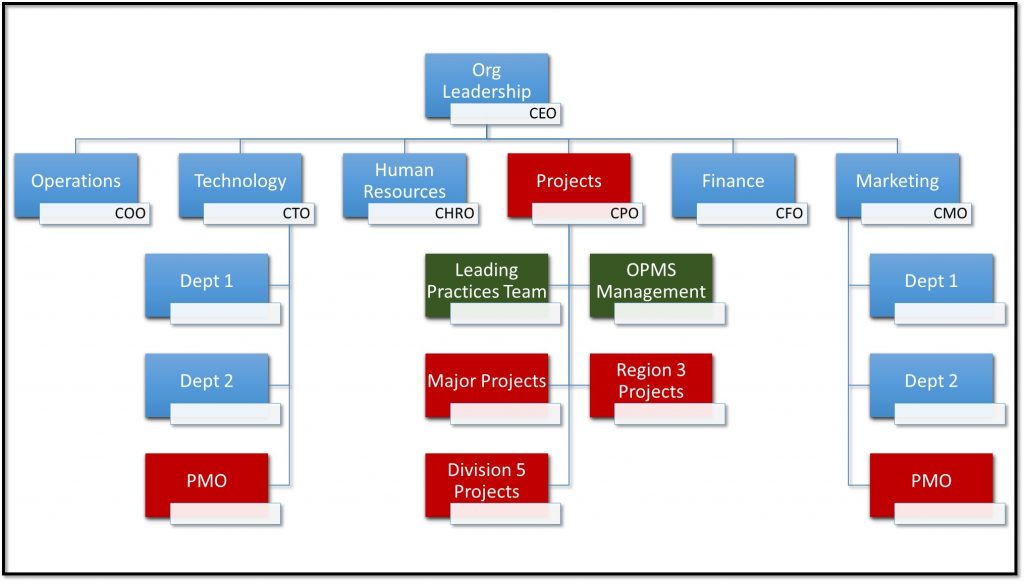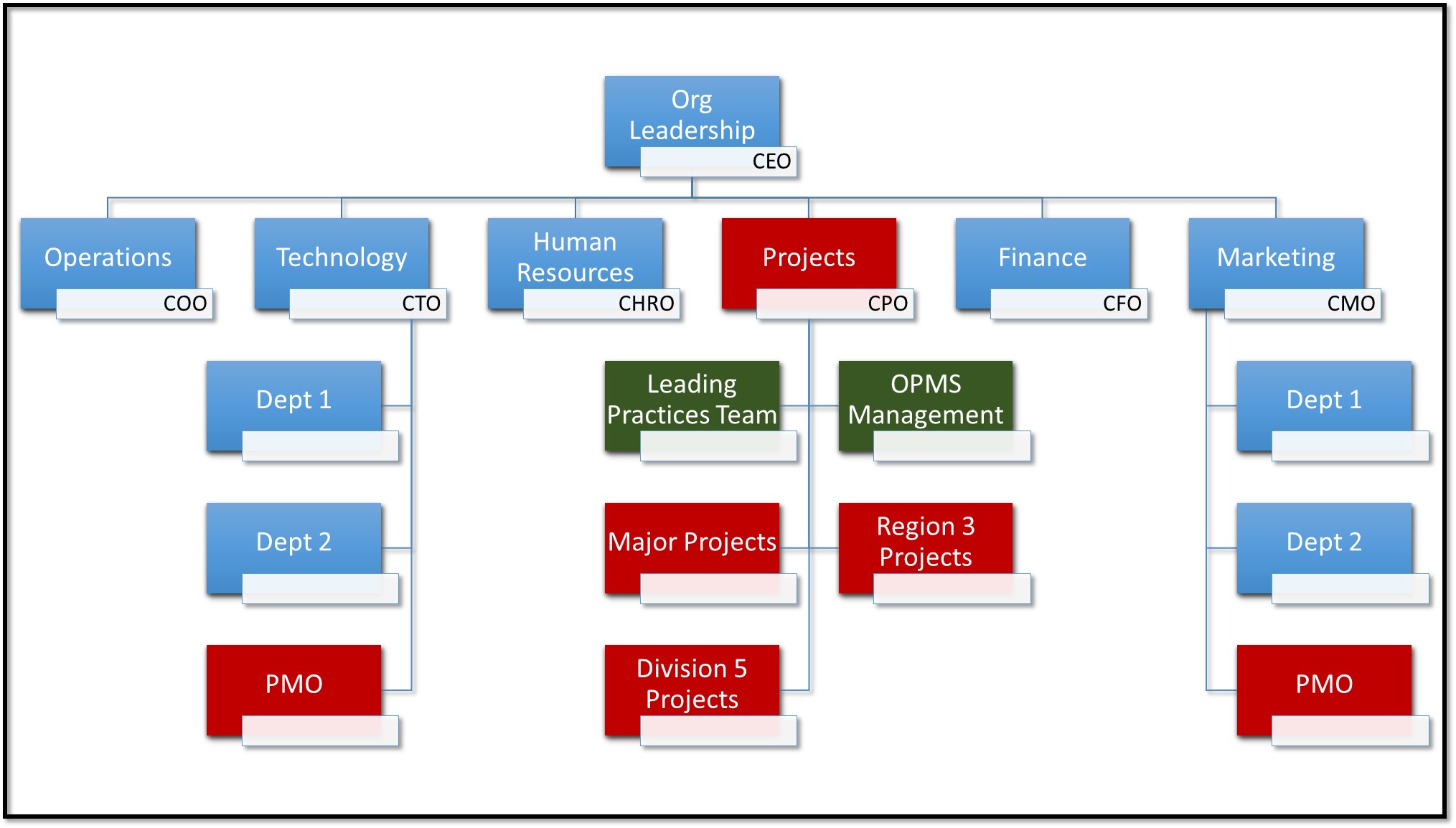Ah – abbreviations – abbreviations. PMO, PMD, PMF, PM, OPM, what do all of these things mean and should we care?
Well, let us start with the last part of the opening sentence, should we care?
Should we care?
- If you work in an organization as a manager or an executive, and
- Your organization delivers value through projects, then
- You should care!
Why?
Because project management TODAY and project management skills are crucial for success. Yes, we know, this is an opinion but it is a professional opinion.
OK, I care, so what do we need?
First, a few definitions to set the stage.
Definitions
- PMO = Project Management Office; or Program Management Office, or Portfolio Management Office. The difference is more than the first word since the differences could be as wide as the Grand Canyon; in terms of mandate, scope, coverage, functions, resources, and VALUE. More later.
- PMD = Project Management Department or Project Management Division; the difference here (between division and department) is due to organizations cultures and structures since in some places a department is part of a division and in other places it is vice versa.
- PMF = Project Management Functions — this is more of a general term than an organizational unit, and the intention is the unit that is responsible for the PM Function if such a unit exists.
- PM = Project Management. Generically, this term could be limited to managing a single project or quite wide to incorporates projects, programs, and portfolios.
- OPM = Organizational Project Management and this term would typically refer to the OPM System, which may include managing projects-programs-portfolios, and the governance and strategic aspects, policies, methodologies, procedures, and all other project management related functions and effort.
- ePMO / cPMO: we often see these abbreviations as well to refer to an enterprise PMO or a corporate PMO. The intention of the ‘e’ or ‘c’ is to reflect a higher level PMO that is likely part of the strategic planning unit or headed by a C-Suite executive.
What do we need?
Let us first agree, if we can, that one-size-fits-all does not work in project management. Sectors and organizations are unique, and they require different approaches.
Second, all organizations, large or small, public or private, non-profit or NGO, need, or we like to say MUST HAVE an OPM System, if this organization deliver projects.
Third, let us forget the distinction between projects, programs, and portfolios for now and focus on projects. In this context ‘projects’ and ‘project management’ can be viewed to include programs and portfolios.
With the above in mind, what do we need, a PMO, PMD, or ePMO?
 How about all three?
How about all three?
Once again, let us see if we can agree. Can you accept the concept that in a medium-size or large organizations there could more than one PMO? Ideally, there should be:
- One centralize PMO for all aspects and activities of the organizations – nice idea but not always practical, OR
- There could be a high-level PMO; maybe an ePMO or cPMO and various divisional PMOs. In this scenario, the cPMO/ePMO will be responsible for the strategic aspects, linking to strategic planning, and setting the PM direction for the organization. Whereas, the divisional PMOs will be responsible for their division’s projects.
However, is this enough? Where would the project managers report to? How to identify the split of responsibilities? These questions and others might be good for another blog article. For now, let us say the following: if many of the organizations projects are short or mid term, does not require numerous resources, and they do not require significant capital investment, then this approach is workable and possible.
How about organizations with projects that require large capital, numerous resources, and projects that may last for more than year?
In our views, a PMO does not properly cover the complexity of these types of projects. Our issue with PMOs is the ‘O’. The word office does not adequately cover the complexity and effort required in managing these projects. The issue is more than semantics; at least in our professional opinion.
These organizations need Project Management Division or Department —– and the PM Functions should be led by a C-Suite executive. The PM Department will house the career (professional) project management resources, such as estimating, planning, control, project managers, etc. It would also be responsible for major or strategic projects.
Possible Structure
The following image is a possible structure

What this image shows that in some, or all divisions, there could be a department or a division PMO. However, it also shows a PM Function led by a CPO – Chief Project Officer, equal to the other CxO’s. In this division, there could be:
- A best – Leading Practices Team responsible for innovations and new initiatives.
- An OPMS team responsible for management and updates of the organizational project management systems (procedures, policies, …)
- There could be a Portfolio Management Team (not shown)
- A Major Projects division
- An estimating-planning department (not shown – or part of the next item)
- A unit covering projects in the early conceptual phases and working with operations and the asset owners (not shown) (it could also be part of the other departments)
- Various units, one for each region; the image show Region 3 Projects to represent this.
- Various units, one for each division, where required
The above is just one approach or concept.
What do you think?
[contact-form][contact-field label=’Name’ type=’name’ required=’1’/][contact-field label=’Email’ type=’email’ required=’1’/][contact-field label=’Website’ type=’url’/][contact-field label=’Comment’ type=’textarea’ required=’1’/][/contact-form]


Trackbacks/Pingbacks